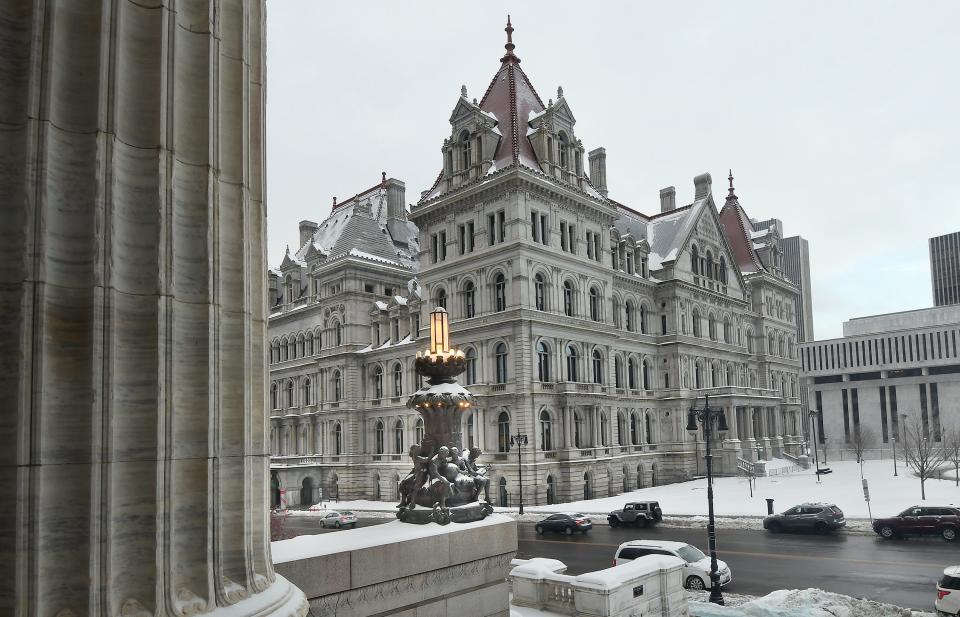As it turns 50, New York's Tuition Assistance Program — TAP — must modernize
As New York lawmakers begin to gear up for the 2024 legislative session, one of the budget and policy issues that will be addressed is the state’s preeminent college financial aid program — the Tuition Assistance Program, or TAP, which will see its 50th anniversary next year. Earlier this month, the New York State Assembly Higher Education Committee held a hearing to examine how to best strengthen TAP.
New Yorkers should hope that that was the first step toward modernizing that five-decades-old program.

An indisputable fact: The cost of college has steadily increased at a pace that exceeds the nation’s inflation rate. Nationally, over the past 20 years the average cost of college tuition and fees at public four-year institutions has risen 9% annually on average. The rise in tuition between public institutions and independent, private ones is different, but the upshot is the same — the costs of attending college have been rising for decades and are increasing at a rate faster than overall inflation.
With college costs rising at a rate faster than the incomes of most Americans, college students and their families took out loans to make up the difference. As costs rose, so did the amount borrowed. The impact has been well documented — U.S. student loan debt now exceeds both credit card and auto loan debt, second only to home mortgages.
Costs continue to rise
The costs that drive the increases in college expenses are decisions largely made at the state and college-specific levels. New York, like the rest of the nation, has for decades shifted the costs of higher education from the public to the families of college students. During that time, the shift was largely done out of sight, during last minute state budget deals. The burden-shift policy became most explicit during the Cuomo Administration. The former governor made a big deal out of the need for “predictable tuition” increases and drove the state toward adopting that approach starting in 2011. For the next decade nearly constant hikes raised tuition rates by more than 42%, yet direct state aid to colleges was largely stagnant.
For five decades, New York has helped to offset the costs of attending college through its Tuition Assistance Program, known as “TAP.” TAP was established in the early 1970s as the way of directing financial aid to the neediest students in both the public and independent college sectors. In its first academic year, 1974, the program offered $1,500 for the neediest students to cover tuition. While the $1,500 was in excess of the maximum public tuition charged at the State University and the City University of New York, a goal at that time also was to help stabilize the costs of attending college in the independent, private college sector. At that time, the existing state support for independent colleges and universities covered only 22% of private tuition — the maximum state financial aid award to a private college student prior to TAP was $600. The goal of the then-new TAP assistance was to boost that support to cover half of independent college tuition for the neediest students.
Today, the maximum TAP award does not cover public college tuition and comes nowhere near half of the costs of tuition costs for independent colleges. Add to that the significant additional fees charged at public institutions, which are not covered by TAP, and books and housing, and it’s easy to see how college has become increasingly out-of-reach for all but the wealthy — unless loans are taken out.
A lot has changed on college campuses since the early 1970s. A college degree is far more necessary than it was five decades ago. Today’s college students are older, more likely to be female, and far more diverse than in 1974. Also, many more students have to work to afford college (in addition to taking on the increased debts).
Adding insult to injury, in 2010 despite an increased need for more students to go into graduate programs, the state ended TAP assistance for graduate programs.
We must modernize TAP: Here are five ideas
On the 50-year anniversary of TAP, it makes sense for Gov. Kathy Hochul and state lawmakers to modernize the program to fit the needs of today’s college students — both undergraduate and graduate — and to do it in a way that will help stabilize both public and independent colleges in New York.
So, what should be done? Here are five ideas:
Increase the maximum TAP award to cover the entire cost of public college tuition and include in that amount coverage for fees imposed by college administrators, such as lab fees, technology fees, etc.
Increase the minimum TAP award from $500 to $1,000 to at least cover costs that have risen due to inflation.
Increase the income eligibility for TAP from $80,000 to $125,000, which matches New York’s Empire State Scholarship program. And while they’re at it, just fold the Empire Scholarships into the TAP program. This would make it easier for college students to benefit.
Expand TAP to graduate students.
End the reduction in TAP assistance that occurs when college students become juniors.
Those steps, and others, will go a long way toward meeting the needs of today’s college students. Educating the state’s future workforce and citizens is not only a powerful rationale for making college more affordable but is also investment in higher education’s positive economic impact. Every dollar of public investment in higher education gets paid back in multiple dollars of economic activity. The governor and the Legislature can act to make sure TAP’s 50th anniversary is a golden one that lays the foundation to meet the needs of students over the next half century. There’s a lot riding on it.
Blair Horner is executive director of the New York Public Interest Research Group.
This article originally appeared on NorthJersey.com: New York TAP program at 50: Reforms are esssential

